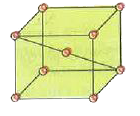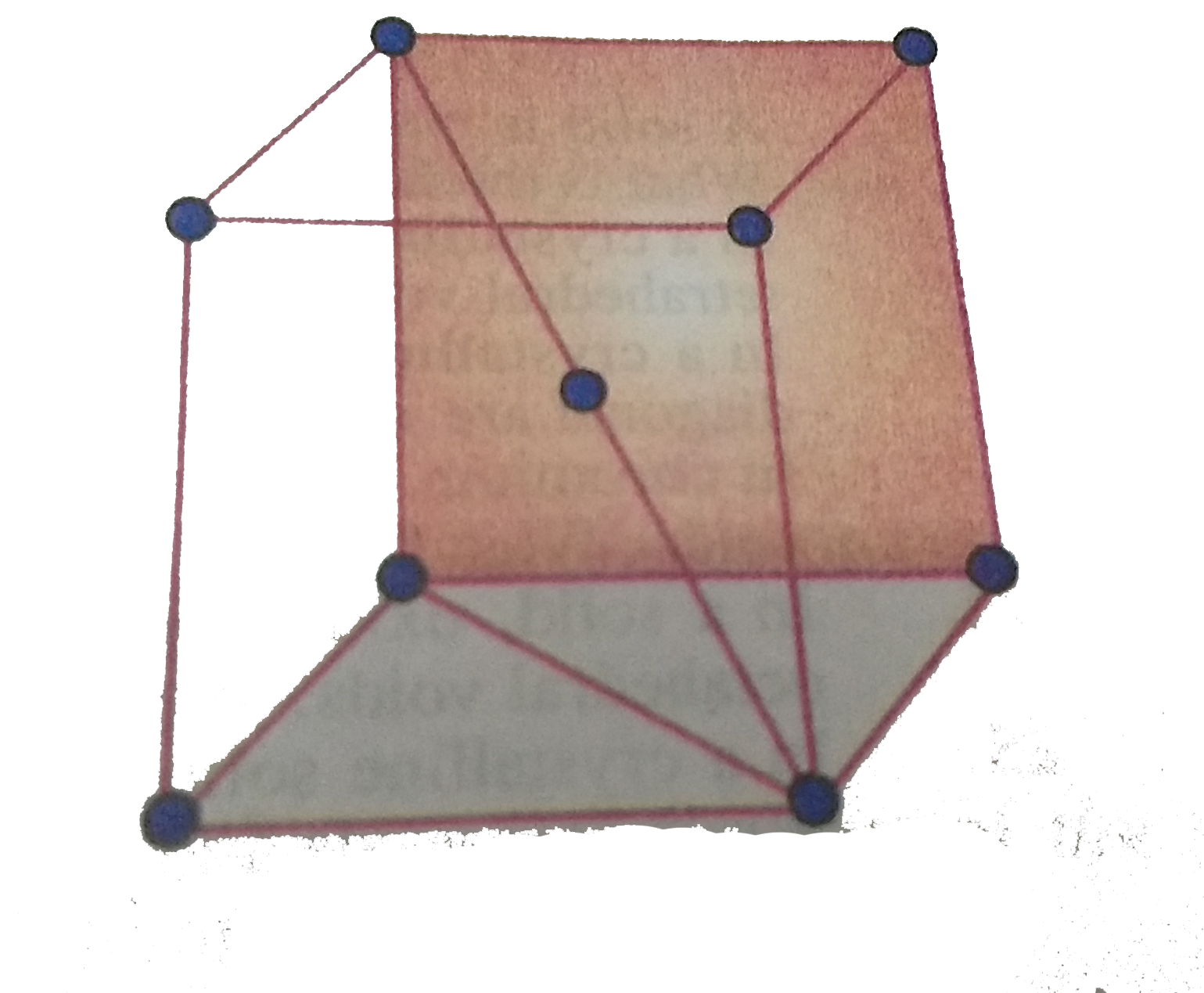What will be the distance between two nearest neighbours in primitive , fcc and bcc unit cell ?
For primitive , d=a
For fcc, d=0.707 a
For bcc, d=1.732 a
For bcc , d=1.414 a
The correct Answer is:A, B
Step by step video, text & image solution for What will be the distance between two nearest neighbours in primitive , fcc and bcc unit cell ? by Chemistry experts to help you in doubts & scoring excellent marks in Class 12 exams.
Topper's Solved these Questions
- BOOK - AAKASH INSTITUTECHAPTER - THE SOLID STATE EXERCISE - ASSIGNMENT SECTION-D (LINKED COMPREHENSION)9videos
THE SOLID STATE
- BOOK - AAKASH INSTITUTECHAPTER - THE SOLID STATE EXERCISE - ASSIGNMENT SECTION-E (ASSERTION-REASON)10videos
THE SOLID STATE
- BOOK - AAKASH INSTITUTECHAPTER - THE SOLID STATE EXERCISE - ASSIGNMENT SECTION-B (OBJECTIVE)27videos
THE SOLID STATE
- BOOK - AAKASH INSTITUTECHAPTER - THE S-BLOCK ELEMENTSEXERCISE - Assignment (Section-J)10videos
THE S-BLOCK ELEMENTS
- BOOK - AAKASH INSTITUTECHAPTER - THERMODYNAMICSEXERCISE - ASSIGNMENT (Section -D) Assertion-Reason Type Questions15videos
THERMODYNAMICS
Similar Questions
An element 'X' has bcc lattice as shown below :
The unit cell length, a is 306 pm.
(a) What is the distance between nearest neighbours?
(b) What is the distance between next nearest neighbours?
(c) How many nearest neighbours does each X atom have ?
(d) How many next nearest neighbours does each X have ?
 View Solution
View SolutionPotassium crystallises in a bcc lattice as shown in figure :
(a) What is the distance the nearest neighbours ?
(b) What is the distance between the next nearest neighbours ?
(c) How many nearest neighbours does each potassium atom have ?
(d) How many next nearest neighbours does each potassium atom have ?
 View Solution
View Solution
Knowledge Check
- Question 1 - Select One
In a F.C.C arrangement edge length of unit cell is a, which of the following is correct distance between two nearest tetrahedral voids?
Aa2BaC√3a/2D√3a/4 - Question 2 - Select One or More
What is true about a bcc unit cell?
AThe number of atoms in the unit cell is 2.BIn addition to an atom at the centre of the body, in a unit cell there are 8 atoms at 8 different corners.COne-eighth of an atom at a corner of the unit cell.DNone of the above. - Question 3 - Select One
What are the number of atoms per unit cell and the number of nearest neighbours in a bcc structure ?
A2,12B4,12C2,8D2,6
Consider an element A. It crystallizes in double fcc (like diamond) with edge length x. If distance between nearest neighbours, and most distant neighbours in one unit cell is p,q and respectively then find :4p×rq2
View SolutionPotassium crystallizes in body centered cubic lattice with a unit cell length a=5.2Å
(A) what is the distance betweenn nearest neighbourss?
(B) What is the distance between next nearest neighbour ?
(C) How many nearest neighbours does each K atom have ?
(D) How many next nearest neighbours does each K has ?
(E) What is calculated density of crystalline KView SolutionPotassium crystallizes in a body-centered cubic lattice with edge length, a = 5.2 Å
(a) What is the distance between nearest neighbours?
(b) What is the distance between next-nearest neighbours?
(c) How many nearest neighbours does each K atom have ?
(d) How many next-nearest neighbours does each K atom have ?
(e) What is the calculated density of crystalline potassium ?View SolutionCalculate the number of atoms per unit cell present in simple, fcc and bcc unit cells.
View SolutionWhat do you mean by primitive unit cell ?
View Solution

